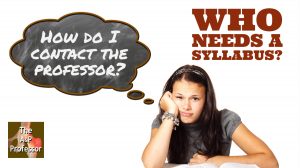Greg Crowther sings A Physiologist's Blessing (3.5 min)
Button & zipper junctions in the lymphatic capillaries (7.5 min)
Methods to promote academic honesty and reduce cheating (28.5 min)
If you cannot see or activate the audio player click here.
Follow The A&P Professor on Twitter, Facebook, Blogger, Nuzzel, Tumblr, or Instagram!
You never really understand a person until you consider things from his point of view […] until you climb into his skin and walk around in it.
Harper Lee
(0:44) If you keep up with the HAPS Blog from the Human Anatomy & Physiology Society (HAPS), you may have already accept Dr. Greg Crowther's challenge to incorporate songs into your A&P course this semester. With his permission, here's a song from Greg that's great for the first day of class!
- Starting on a high note: a first-week-of-fall A&P challenge (HAPS Blog post with a fun challenge from Greg Crowther)
- A Physiologists Blessing (the home page for the song in this episode; inlcudes lyrics, mp3 demo, karaoke file, sheet music, background info; used in this podcast by permission)
- VOICES (online conference on using songs in STEM education; only $10; features Crowther)
- https://hapsblog.org/ (HAPS Blog; one of my favorite blogs for A&P teachers)
- Playful & Serious Is the Perfect Combo for A&P (previous episode explaining the value of playfulness in the A&P course)

(4:14) Are you familiar with the button junctions that connect overlapping endothelial cells in lymphatic capillaries in a way that forms valves? What about zippers? Where do they fit into the story? (They do.) Here are some links to the details behind a great demo that Kevin shares for understanding lymphatic structure and function.
- Functionally specialized junctions between endothelial cells of lymphatic vessels (2007 research article outlining button and zipper junctions; great images)
- Plasticity of button-like junctions in the endothelium of airway lymphatics in development and inflammation. (2012 research article shows that zippers predominate in early development, but are then convert to buttons; also has some really cool images showing these junctions)
- Lacteal junction zippering protects against diet-induced obesity (2018 research article)
- Tighter lymphatic junctions prevent obesity (perspective and summary of the research article; includes a nice slide you can use in teaching)

(11:55) One way to approach "the cheating issue" in our courses is to promote a culture of academic honesty from the start. But how do we do that? Kevin shares some practical tips you can use for a comprehensive approach to creating and maintaining a culture of professional and academic integrity in your A&P courses (or any courses, really).
-
- What the Best College Teachers Do (the Ken Bain book mentioned in this episode)
- The Syllabus Episode (mentioned several times in this podcast)
- Academic Integrity (A special topic page at The A&P Professor website; includes additional information and links to resources)
- Why be honest? (about academic integrity; for students)
- Kevin’s Academic Integrity statement (This is a statement I have used in my course syllabi. You are welcome to adapt it according to your own course and institution’s needs. It’s an example to get you thinking about actively promoting honesty.)
- Kevin’ Academic Integrity Case Study handout/activity (This document is an example of an in-class activity that I use to promote discussion of academic integrity. It’s a handout used for small group discussions. You can adapt it to fit your needs, per the attribution/share-alike license enclosed in the document.)
- Frank O'Neill @growgraymatter (Turn on your "Frank O'Neill filter.")
- Using copyrightable materials in teaching (Some good practical advice from the University of Minnesota Libraries. But ask your own librarians for help. And don't forget, I've got an upcoming episode with an expert!)
- Testing as Teaching (this seminar at The A&P Professor website shows you how I use Respondus test editor, one of many available test editors that can also easily produce multiple versions of a test)
- Caring for Students Helps Them Succeed (the episode where I focused on "that empathy thing")
- Cheating in College: Why Students Do It and What Educators Can Do about It (a book you might find to be helpful)
- 1-833-LION-DEN or 1-833-546-6336
- podcast@theAPprofessor.org

If the hyperlinks here are not active, go to TAPPradio.org to find the episode page.
- More details at the episode page.
- Transcript available at the script page.
- Listen to any episode on your Alexa device.
- Join The A&P Professor social network:
- Blog
- Twitter @theAPprofessor
- Facebook theAPprofessor
- Instagram theAPprofessor
- YouTube
Amazon referrals help defray podcasting expenses.
Click here to listen to this episode—or access the detailed notes and transcript.








